The discounters are becoming a force to be reckoned with, stretching the battleground beyond pounds and pence and changing the face of the UK grocery industry along the way. C-Store looks at their route to success and asks whether independent stores can fight back
Earlier this year Lidl was crowned the UK’s fastest-growing bricks and mortar supermarket, with sales in double-digit growth of 10% in the 12 weeks to 17 June 2018. The same Kantar Worldpanel grocery market share figures also revealed an 8.2% sales hike for Aldi (officially the UK’s fifth largest grocer ahead of the Co-op), helping it to hit a new record high market share of 7.4%.
Now with stats like that, it’s clear that the nation’s love affair with the discounters is showing no signs of fizzling out.
In fact, for many UK shoppers, what began as an occasional dalliance is fast becoming a lasting relationship, and one which is becoming increasingly challenging for other retailing competitors to contend with.
Price is, of course, the leading reason for their appeal. The discounters’ prices are typically 15% lower than the private-label offerings from established grocers, and up to 200% lower than branded products at traditional grocers, according to the Boston Consulting Group’s (BCG) 2017 report How Discounters are Remaking the Grocery Industry.
Last month’s Grocer 33 survey of shopping basket prices revealed that, on average, Lidl was just over 17% cheaper for a basket of 33 goods than the UK’s five major multiples in the week to 16 June, while Aldi was found to be 13.6% cheaper for a different basket of items in the week to 12 May. And there is no doubt that consumers have noticed.
The discounters in numbers
Lidl currently has over 700 stores across England, Scotland and Wales and is investing £1.45bn in expanding its store estate in 2017/18.
Aldi has more than 775 stores and has doubled its market share since 2010. The company plans to open 70 new stores this year and by 2022 will operate more than 1,000 sites.
Looking at the wider discount industry, sales at B&M stores were up 22.4% in the year to 31 March and the chain, which sells everything from biscuits to garden chairs and kettles, currently has 576 stores under its own banner as well as the Heron Foods business.
Home Bargains owner TJ Morris currently has a portfolio of over 400 stores, while Poundland is outperforming much of the high street with record festive sales up 5.6% in the 12 weeks to 24 December.
Trying to compete with a discounter on the doorstep is a scenario which retailers up and down the country are all too familiar with, including Mike Dorey, owner of Eastcombe Village Stores (Londis), Stroud, Gloucestershire.
“We have both an Aldi and a Lidl in Cirencester, which is about a 20-minute drive away, but Aldi is also planning to open a new store in Stroud next year, which could have a worrying impact as that’s just a short drive from here.
“The discounters are creating a new kind of mindset for shoppers about what they can expect to get for a certain price,” Mike continues. “They are making shoppers much more price-aware than they were before and these new mindsets are very difficult to challenge, especially when convenience store price files don’t stack up, which more often than not, they don’t.”
However, the picture is far more complex than simply cheaper prices. Another key driver of their rapid growth is the astronomic success of their own-label brands, which shoppers now judge to be as good as and, in many cases, even better than established brands and other retailers’ own-label offerings.
Last Christmas Aldi’s Specially Selected Golden Topped Christmas Pudding trumped Selfridges, Marks & Spencer and Waitrose to be voted the best-tasting pudding of the year by the Good Housekeeping Institute.
That same Christmas, traditionally a time for indulgence and excess, Lidl achieved record December results as more customers than ever walked through its doors, with sales across the estate up 16% on the same period in 2016.
And we’re not just talking about stocking up on drinks and snacks. With fresh foods now becoming a key battleground for the discounters, Lidl also saw a 10% increase in turkey sales, with overall fresh meat and poultry sales up by 17% for the period.
This keener focus on non-traditional categories such as fresh, chilled and even freshly baked (Aldi is now opening in-store bakeries in selected stores), plus increasing quality perceptions, means that the discounters’ customer base has also grown beyond low-income shoppers to include savvy, high-income consumers.
As their customer base grows and evolves, so too does the physical appearance of stores. The discounters are working hard to improve store interiors, moving away from the cheap and cheerful look of old. Aldi’s £300m Project Fresh initiative, for example, is currently seeing stores being upgraded with new high-spec fixtures and fittings and services, plus extended fresh ranges. Nearly 350 stores will have undergone a makeover by the end of this year.
A changing mindset
These key changes are increasingly leading shoppers to ask: “Why should I pay more to shop somewhere else?” It’s a question which is forcing the UK’s other key grocery players along with the convenience store industry to work much harder to answer.
In fact, new research from shopper insights consultancy HIM shows that the key top-up mission within the convenience channel is now under threat, with a higher proportion of shoppers choosing Aldi and Lidl to satisfy their needs.
The findings show that in 2018, the volume of shoppers using Aldi and Lidl on a planned top-up mission reached 28%. In comparison, since 2008 the volume of shoppers visiting a convenience store on a planned top-up mission has fallen from 28% to 21%.
Val Kirillovs, research & insights director at HIM, says: “The top-up mission was once the cornerstone of the convenience channel, with small stores in convenient locations specifically designed to service the needs of the shopper in between their traditional weekly shops. However, the planned top-up mission in the convenience channel is in decline.
“During this period Aldi and Lidl have begun to steal these top-up shoppers away with wider ranges, cheaper prices, better quality fresh and an increase in store volumes in convenient locations.”
For Mike, it is these changing patterns that are of the most concern: “Shoppers know that they can get a jar of strawberry jam for 80p at Lidl and it will cost them £1.80 in my store, but they won’t jump in the car to go to Lidl then and there for a pot of jam.
“What they’ll do is wait two or three days until they need more items and then they’ll go there to do a big shop. So the discounters are eroding the top-up shopping opportunity, which for so long has been key for convenience retailers,” he laments.
So what’s to be done? Fortunately, convenience retailers up and down the country are taking a broad range of different actions, depending on the demands of their own unique customer bases, to keep their tills ringing.
While competing with the discounters on price is not really a viable option, closing the pricing gap in certain key categories can help.
“Consumers are often very price sensitive about commodity-type products, such as canned goods, paper products and cleaning supplies, which are not highly differentiated. In these areas, retailers need to be more aggressive about price reductions,” BCG’s report adds.
It’s a tactic with which Peter Lamb, owner of Lamb’s Larder in Bells Yew Green, Kent, is experiencing success.
“Close analysis of our figures was showing us that, over time, our ambient grocery and homecare sales were gradually slowing, until they were hardly selling at all. However, on the flip side, sales of impulse items, takeaway coffees and teas and super-premium brands such as the Cotswold Traiteur frozen food and Taywell Ice Cream were sky-rocketing.
“We talked to customers about the change and looked at the data and what we realised was that we were losing our grocery sales to the discounters. It was all price driven. As a result we changed our product mix, removing a large amount of branded grocery lines and replacing them with cheaper Happy Shopper alternatives.
“Since then, sales of grocery items have started to recover. Basically when it comes to certain categories, and grocery is a key one, it seems like brands don’t matter so much to shoppers anymore. Aldi killed brands,” Peter says.
Strong words, but he has a point as, according to Kantar Worldpanel’s 2018 UK Brand Footprint Ranking, more than half of the UK’s most chosen brands, including big names such as Heinz, Walkers and Kingsmill, are experiencing declining penetration and frequency.
While all the blame for the slide can’t be placed at the discounters’ doors, a significant portion probably can, as shoppers turn to the likes of Aldi and Lidl plus other retailers for cheaper own-label alternatives. Latest data from IRI’s Private Label Report shows that own-label goods are now outperforming national brands with a 52% value share of sales.
For convenience stores, it’s clear that having the backing of a strong and competitively-priced own-label brand is key, and so too is even better promotional support on key branded lines, believes Mike.
Shouting loud and clear about any striking special offers as and when they arise can be hugely beneficial, he says. “Because of this new shopper mindset, one really effective way of competing against the discounters that we have found is to really shout about our special offers as and when we get them.”
And the power of point-of-sale material “really can’t be overstated,” he asserts.
“I’ve carried out experiments with special offers in my store and it’s incredible how much more take-up they get when they are backed with POS, compared with when they aren’t.
“If we have truly good special offers then at the very least we need to shout about them, and the symbol groups and wholesalers could do more to help us do this. With Londis I don’t receive POS to go with every single special offer, but that would be a great help.”
Justifying any price difference by offering and excelling in other categories and areas that your shoppers prize is another key way to fight back.
Key categories
As Peter’s experience has shown, while they may be price sensitive in certain categories there are plenty of others where they will willingly pay more.
“Stocking premium ready meal options from the likes of frozen food brand Cook and the Cotswold Traiteur are proven ways of driving footfall and spend,” he says.
“Shoppers may quibble over the price of beans and washing-up liquid, but they will happily pay more for a quality evening meal solution, quality local foods and upmarket ready meals.”
Quality hot drinks, artisan breads and local or deli-style products also fall into this category, as Linda and Dennis Williams of Broadway Convenience Stores in Edinburgh certainly attest.
The husband-and-wife team have had to engineer a major shift in focus since the opening of an Aldi superstore just a stone’s throw away from them in January. Their fightback has included introducing new ranges and services that their competitor doesn’t currently offer, including a new Premier Deli concept and a “great tasting” coffee-to-go option from Coffee Essentials.
Linda says: “Certainly the past few months have been tough; it’s hard to take when you see your one-time regular customers coming into the store with a bag of Aldi shopping in each hand, and asking you for a scratchcard or a packet of cigarettes.
“Loyalty is a fickle thing, and while we have retained many fiercely loyal customers, just as many have followed the lure of the new kid on the block.
“Our almost year-long programme of preparation has been the saving of us, though. Without the changes that we have made in store, and especially without our new Premier Deli concept, our sales figures would have told a vastly different story,” Linda says.
Innovative, well-managed food-to-go offers, including premium, ethnic, halal and vegan options, are also helping many other stores keep footfall and sales afloat.
Ricky Turner, manager of Simply Fresh Surrey University, is adamant that the store’s striking food-to-go offer, including Chinese Steam Buns and calorie-controlled Hot Pots, is one of the significant factors helping it to fend of competition from other retailers, including the large Lidl just over one mile away.
But it’s not the right solution for all, as Mike points out. “Food to go can be a really effective way of fighting back and I know of many retailers who are doing so, but obviously it depends on your location.
“For us, in the centre of a small rural village with little passing trade, it wouldn’t be correct.
“I’m a strong believer in doing the basics as well as possible, though. Customer service isn’t something that the discounters are famed for, and queuing times are certainly an issue there.”
The statistics back him up. Despite topping the rankings of Which?’s Best and Worst Supermarket satisfaction survey (see panel, p17), many Aldi shoppers still complained about below-par service, with one shopper quoted as saying the supermarket has “great prices, but there are long queues at the checkout and insufficient staff”.
Mike adds: “I think that as long as we offer first-rate service, keep the store clean and have fair pricing backed with strong, well-publicised promotions, we won’t go far wrong.”
HIM’s Kirillovs agrees: “The truth is that shoppers value different things when they go to a convenience store. When shopping in convenience it is much more around experience; great staff, easy-to-find products, how the store looks and such.
“Retailers need to continue the great work they are doing on creating a memorable and pleasant shopping experience. This is what will drive loyalty and spend.”

Aldi voted shoppers’ favourite in Which? survey
Earlier this year Aldi was rated the nation’s favourite bricks-and-mortar supermarket in the Which? annual Best and Worst Supermarket satisfaction survey.
Aldi’s special offers rated well, as did the quality of its fresh and own-label products and the ease of finding items on its shelves.
It is the second time Aldi has topped the annual survey – the previous occasion was in 2014.
This year Waitrose was knocked off the top spot, which it had held for three years, and dropped to fourth position. Its customers gave it a two-star rating for its value for money, in contrast to Aldi’s five.
M&S was in second place, while Lidl ranked in third position, with five stars for its value for money. But the discounter did not do so well when it came to queuing time, staff availability and range of products.
The big four supermarkets – Tesco, Asda, Morrisons and Sainsbury’s – languished at the bottom of the in-store survey.
Alex Neill, managing director of Which? Home Products and Services, said: “With food costs rising it seems as though shoppers have felt the pinch and are voting with their feet and wallets. Aldi and Lidl have won over customers with value for money.”
Beyond cheap and cheerful
These days the discounters are about so much more than the ‘pile it high, sell it cheap’ ethos, with Aldi and Lidl both displaying a keen focus on honing their credentials in corporate responsibility and ethical trading.
Aldi claims to be the UK’s highest paying supermarket. Store assistants receive a minimum hourly rate of £8.85 nationally and £10.20 in London – higher than the government’s National Living Wage and also above the Living Wage Foundation’s recommended national rates.
In 2017 Lidl became the first British supermarket to source 100% sustainable cocoa, donated two million meals to people facing food poverty and launched a new £3m partnership with the NSPCC to help keep children safe from abuse.






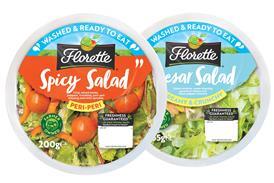
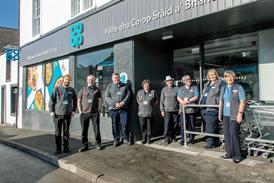
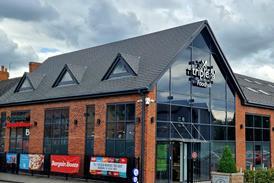
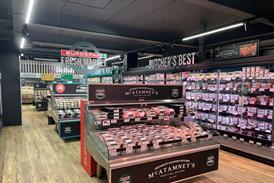

![WG-4003[58]](https://d2dyh47stel7w4.cloudfront.net/Pictures/274x183/4/5/1/353451_wg400358_6083.jpg)




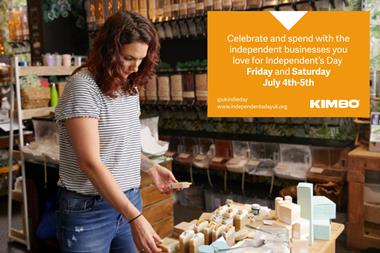
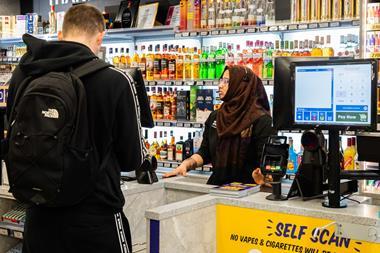
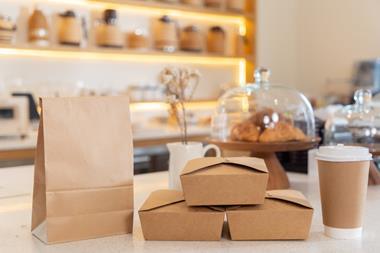

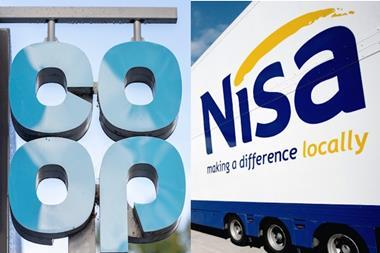
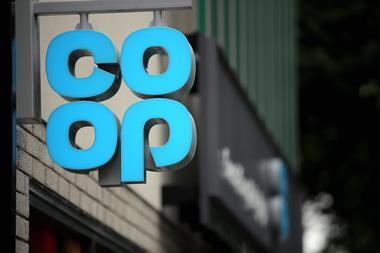
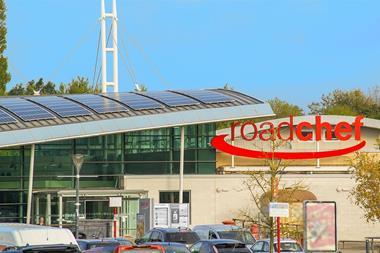

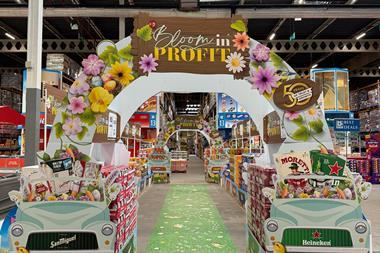
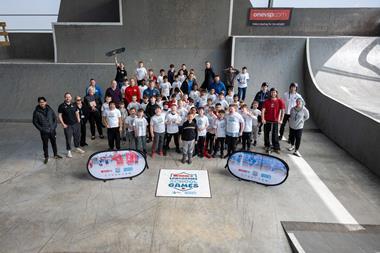

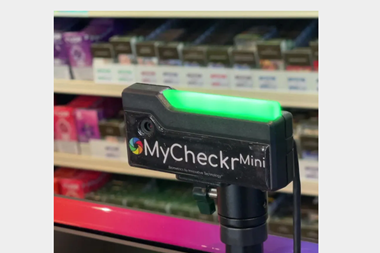
No comments yet